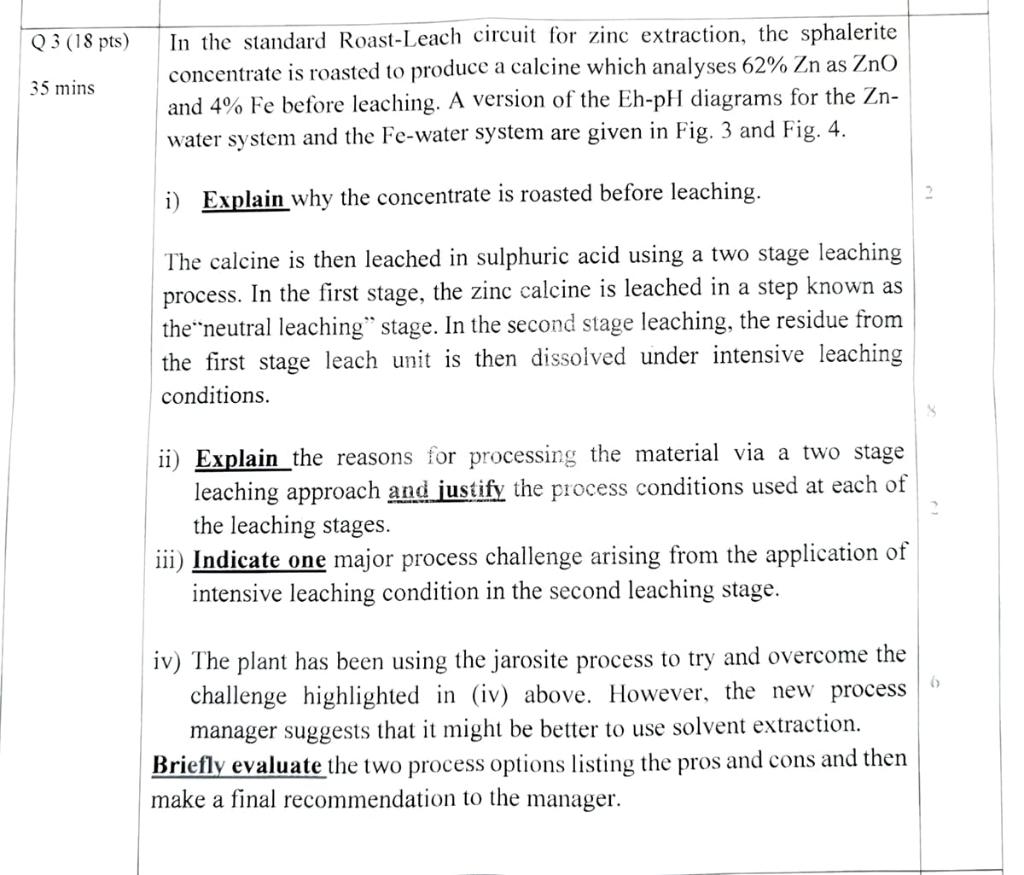Home /
Expert Answers /
Chemical Engineering /
in-the-standard-roast-leach-circuit-for-zinc-extraction-the-sphalerite-concentrate-is-roasted-to-pa750
(Solved): In the standard Roast-Leach circuit for zinc extraction, the sphalerite concentrate is roasted to ...
In the standard Roast-Leach circuit for zinc extraction, the sphalerite concentrate is roasted to produce a calcine which analyses \( 62 \% \mathrm{Zn} \) as \( \mathrm{ZnO} \) and \( 4 \% \) Fe before leaching. A version of the Eh-pH diagrams for the \( \mathrm{Zn} \) water system and the Fe-water system are given in Fig. 3 and Fig. \( 4 . \) i) Explain why the concentrate is roasted before leaching. The calcine is then leached in sulphuric acid using a two stage leaching process. In the first stage, the zinc calcine is leached in a step known as the "neutral leaching" stage. In the second stage leaching, the residue from the first stage leach unit is then dissolved under intensive leaching conditions. ii) Explain the reasons for processing the material via a two stage leaching approach and justify the process conditions used at each of the leaching stages. iii) Indicate one major process challenge arising from the application of intensive leaching condition in the second leaching stage. iv) The plant has been using the jarosite process to try and overcome the challenge highlighted in (iv) above. However, the new process manager suggests that it might be better to use solvent extraction. Briefly evaluate the two process options listing the pros and cons and then make a final recommendation to the manager.
Expert Answer
(i) The two step leaching has the following advantages: • The recovery rate of the zinc extracted increases. • Efficie
